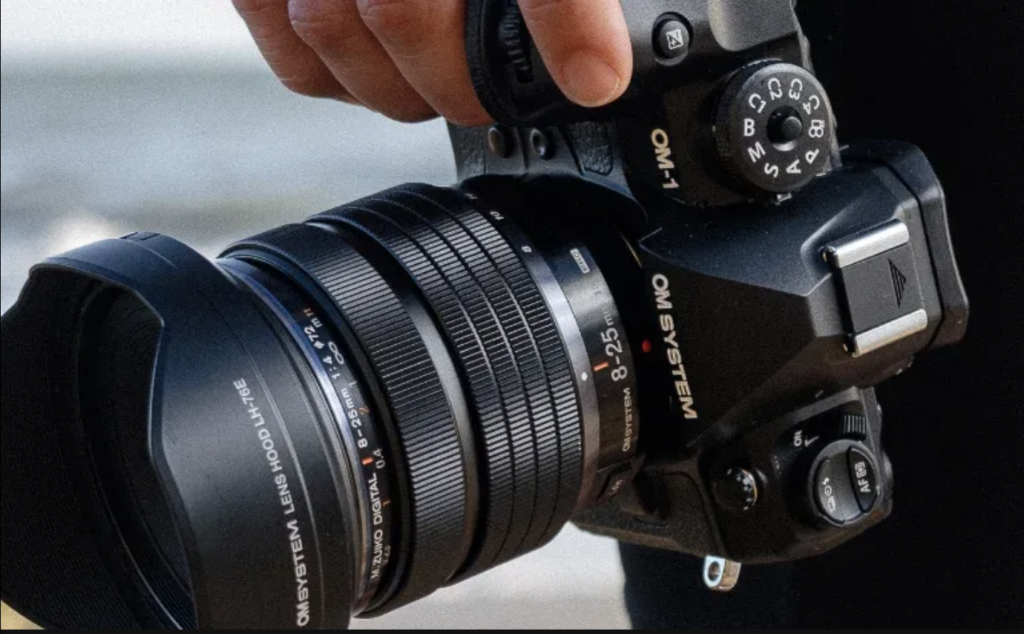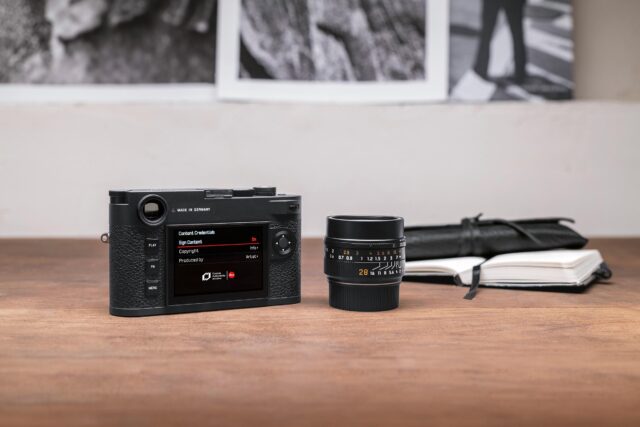In many walks of life, speed is valuable. But just how great is the need for speed in photography? This week, we have stories addressing situations where either fast or slow is preferred. Did you realize the benefit of having a faster sensor? If not, we have a nerdy video for you that reveals all. And are you a photographer who prioritises lens weight over speed? Then you might enjoy a review of an incredibly versatile new zoom lens for L-Mount.
A review of Panasonic’s new wide-to-telephoto zoom for L-Mount
Back in February, we wrote about the announcement of the Lumix S 28-200mm f/4.0-7.1 macro travel zoom. At the time, we highlighted the emerging trade-offs being made in weight versus maximum aperture by lens designers. So we were intrigued to see an evaluation of this lens by Josh Cameron, a high-energy reviewer of Panasonic gear.
In a glowing review, Josh highlights its small size, light weight (413g), excellent optical performance, and keen price (£899/$899). He compares it to the Lumix 20-60mm f/3.5-5.6, (love it!), as well as offerings from other manufacturers.
As we have discussed, when it comes to maximum aperture, the need for speed comes with a weight penalty. But, for many photographers, the weight of their kit is an important consideration. So, is it worth sacrificing maximum aperture to get a lighter lens? We, and Josh, agree emphatically that it is. And in the case of this Lumix 28-200mm f/4.0-7.1, its slow speed is mitigated by its exceptional in-lens-image-stabilisation. This is further enhanced when coupled to a compatible camera with in-body-image-stabilization.
And, as a further bonus, this lens offers impressive macro-capabilities.
Josh describes the lens as one of the most versatile and enjoyable bits of kit he has ever used — quite an endorsement. We might even pick up one ourselves.
Leica Firmware update for M11, M11-P and M11Monochrom
The latest firmware update for the M11 family is version 2.1.2 and, as usual, it is recommended that all owners perform the update immediately. Here, the need for speed is a virtue. The update includes important bug fixes and improvements to the stability of the firmware. In particular, the new firmware addresses:
- Sporadic system errors during lens changes
- Sporadic system errors during single-frame shooing
- Sporadic system errors during continuous shooting in combination with CAI (content credentials).

Known errors include delays to the camera activation process in rare instances. Leica also provides an update in relation to memory card use, although the solution is not included in this firmware update. In rare cases, the use of UHS-I SDs may result in some technical difficulties. An optimisation for these cards is planned for a later firmware update. Meanwhile, Leica recommends using UHS-II cards to generally avoid these issues and ensure the best camera performance.
As usual, Leica cautions that any interruption of the update process can cause serious damage to the camera. The update should be carried out via Leica Fotos or via a newly formatted SD card. It is important not to switch off the camera, nor remove the battery or lens during the update process.
Download the Firmware 2.1.2 for the M11 family here.
The need for speed in sensor performance
When we think of high-performing sensors, what we are usually thinking about is sensor resolution. But, as Anthony Gugliotta points out in the video below, sensor speed can be just as critical in some situations.
The video is on the technical side, but delves into a subject with which many photographers are probably unfamiliar. The presenter points out the interrelationship between sensor resolution, sensor speed, shutter speed, and flash synchronization. He then goes on to explain how newer sensors record in 14-bit vs 12-bit, and the large increase in data collection that enables. This offers several benefits, such as reducing rolling-shutter effects when using an electronic shutter for speed or silence.
It’s probably not for everyone, but we found the video fascinating.
OM-1 Mark II system now available discounted
If you have the need for speed for your wildlife photography, the OM1 Mark II might be for you. It offers a ‘blazingly fast’ 50 frames per second in AF-C mode, and 120 frames per second in AF-S mode. And, it is now being discounted for the first time. This camera is also noted for its blazingly fast autofocus, another important asset for wildlife shots.

Judging by the Macfilos comments section, this micro-four-thirds (M43) camera is developing quite a following. Its compact format is great for travelling, and incorporates a host of computational photography-based features. These include enhanced image recognition, in-camera graduated neutral density filters, and simplified focus-stacking.
Hopefully, we can post a full user-review of one of these marvels before too long. Please let us know if you have one and are interested in putting pen to paper.
Filling the gap: A compact that isn’t a premium model

The craze for compacts such as the Fujifilm X100VI and, even, Leica’s new D-Lux 8,has often been covered lately in Macfilos. The current holy grail, of course, is the X100VI, which we reviewed last week. There’s no doubt the demand is justified. But is there a place for a more mainstream, more affordable enthusiast camera? Richard Butler explores this theme in this article in DPReview. As Richard says,
I’m going to do something I would usually refrain from doing: I’m going to propose a camera I think manufacturers should make. This is probably a fool’s errand: even you sidestep the pitfall of asking for the impossible — a 24-120mm F2 zoom the same size, weight and price of a kit zoom, or ‘this camera but without video, for less money‘ — I still risk the solipsism trap of assuming the thing that I desire is something other people want, too.
What’s your take on this? Do you think these premium compacts are pricing themselves out of the market? Is there a place for a simpler, less expensive all-round camera? What are the features you would most value? And would you include video among them?
Want to contribute an article to Macfilos? It’s easy. Just click the “Write for Us” button. We’ll help with the writing and guide you through the process.






I shoot with an Om-1 (mark 1) and it’s a great all-rounder. The bird AF is excellent , it is feature packed and the ibis makes it an incredibly versatile, do everything camera.
On the flip side, I’ve also been playing with an ancient Olympus E-300 and 14-54 lens, all for a princely sum of about $100 Australian dollars. It’s about as slow as an AF camera gets, it’s buffer fills in a couple of seconds even though it chugs along at 3fps and it’s entirely reliant on an OVF. No live view, no ibis . And yet, it’s 8mp ccd kodak sensor produces distinctive images.
As Einstein pointed out, speed and time is relevant to your vantage point.
I have to agree that high speed lenses are not nearly as important these days with the exception of a need for an extremely shallow depth of field. 90% of my images are with an f/2 lens and normally stopped down a bit. IMHO a portrait at f/2 has a nice bokeh and a reasonably shallow depth of field. The extra weight, size and cost for me are not worth it. In the case of Leica glass, the cost difference is huge to get to f/1.4. The recent Leica sensors are really excellent and do not demand f/1.4 for exposure purposes, even at night. Couple that with the great noise reduction software out there, it is hard to justify the extra expense and weight for my type of shooting.
Exactly, Bill. I used to use a Noctilux to get, on film of course, shots that I couldn’t get otherwise. F/2 is enough for separating subject from background with today’s sensors, but I do like f/1.4 for 35mm lenses. But a 35/1.4 need not be that large or heavy.
For shots in low light, where subject separation or bokeh is not that important, f/4 is fine for current Leica digitals. And I basically have f/4 set on whatever lens I am carrying around, except in very bright conditions.
Ed